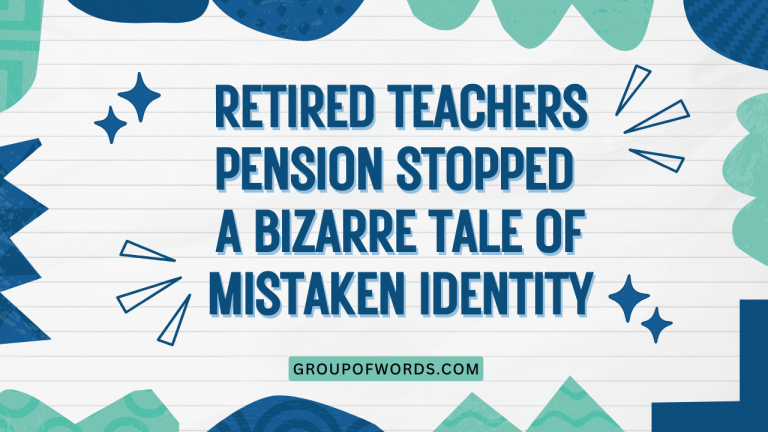Mastering Words Ending in ‘F’: A Comprehensive Guide
Words ending in ‘f’ often present a unique challenge for English learners, particularly when it comes to forming plurals. The standard rule of adding ‘s’ doesn’t always apply; instead, many words require changing the ‘f’ to ‘v’ before adding ‘es’.
Understanding these rules and exceptions is crucial for accurate writing and speaking. This article provides a detailed exploration of words ending in ‘f’, covering their definitions, structural patterns, usage rules, common mistakes, and advanced topics.
Whether you’re a beginner or an advanced learner, this guide will equip you with the knowledge and practice you need to confidently navigate this aspect of English grammar.
This guide is designed for English language learners of all levels, teachers looking for comprehensive resources, and anyone interested in improving their understanding of English grammar and vocabulary. By the end of this article, you will have a solid grasp of the rules governing words ending in ‘f’ and be able to apply them effectively in your writing and speech.
Table of Contents
- Definition: Words Ending in ‘F’
- Structural Breakdown: Singular vs. Plural Forms
- Types and Categories of ‘F’ Ending Words
- Examples of Words Ending in ‘F’
- Usage Rules for Words Ending in ‘F’
- Common Mistakes with Words Ending in ‘F’
- Practice Exercises
- Advanced Topics
- Frequently Asked Questions (FAQ)
- Conclusion
Definition: Words Ending in ‘F’
Words ending in ‘f’ are a common feature of the English language. Most of these words are nouns, but there are also some adjectives and verbs that conclude with this letter.
The significance of these words lies primarily in their pluralization, which often deviates from the standard rule of simply adding an ‘s’. This variation in plural formation makes understanding the rules governing these words essential for accurate communication.
In linguistics, the ‘f’ sound is a voiceless labiodental fricative. This means it’s produced by forcing air through a narrow channel between the lower lip and upper teeth, without vibrating the vocal cords.
The spelling ‘f’ usually corresponds to this sound, but it’s the pluralization rules that make these words grammatically interesting.
Structural Breakdown: Singular vs. Plural Forms
The core of understanding words ending in ‘f’ lies in recognizing the difference between their singular and plural forms. While many English nouns form their plurals by simply adding ‘s’, words ending in ‘f’ often require a change to ‘v’ before adding ‘es’.
This transformation is rooted in the historical development of the English language.
The typical structural change involves replacing the final ‘f’ with ‘v’ and then appending ‘es’ to the word. For example, the singular noun “leaf” becomes “leaves” in the plural.
However, it’s crucial to note that not all words follow this pattern. Some words ending in ‘f’ form their plurals by simply adding ‘s’, such as “roof” becoming “roofs.”
Types and Categories of ‘F’ Ending Words
Words ending in ‘f’ can be categorized based on how they form their plural. There are three main categories:
Regular Pluralization (Adding ‘s’)
This category includes words that follow the standard English pluralization rule of simply adding ‘s’ to the end of the word. These words don’t undergo any changes to the ‘f’ before adding the ‘s’.
‘F’ to ‘V’ Pluralization (Adding ‘es’)
This category comprises words that change the ‘f’ to ‘v’ and then add ‘es’ to form the plural. This is a common pattern, but it’s important to remember that it doesn’t apply to all words ending in ‘f’.
Irregular Pluralization
While less common, some words ending in “f” may follow irregular pluralization patterns. These might involve internal vowel changes or other unique transformations.
The plural form of “staff” can be “staffs” or “staves” depending on the context, representing an example of irregular pluralization.
Examples of Words Ending in ‘F’
To solidify your understanding, let’s explore various examples of words ending in ‘f’ and their plural forms. These examples are categorized based on the pluralization rule they follow.
Examples of Words Ending in ‘F’ That Add ‘s’
The following table provides examples of words that simply add ‘s’ to form their plural:
| Singular | Plural |
|---|---|
| Roof | Roofs |
| Cliff | Cliffs |
| Chief | Chiefs |
| Proof | Proofs |
| Grief | Griefs |
| Safe | Safes |
| Gulf | Gulfs |
| Turf | Turfs |
| Dwarf | Dwarfs |
| Scarf | Scarfs |
| Puff | Puffs |
| Cuff | Cuffs |
| Sniff | Sniffs |
| Stuff | Stuffs |
| Oaf | Oafs |
| Serif | Serifs |
| Spoof | Spoofs |
| Plaintiff | Plaintiffs |
| Bailiff | Bailiffs |
| Handkerchief | Handkerchiefs |
| Brief | Briefs |
| Tariff | Tariffs |
As you can see, these words follow a consistent pattern of adding ‘s’ without any changes to the ‘f’.
Examples of Words Ending in ‘F’ That Change to ‘V’ and Add ‘es’
The following table illustrates words that change the ‘f’ to ‘v’ and add ‘es’ to form their plural:
| Singular | Plural |
|---|---|
| Leaf | Leaves |
| Knife | Knives |
| Life | Lives |
| Wife | Wives |
| Wolf | Wolves |
| Shelf | Shelves |
| Self | Selves |
| Half | Halves |
| Loaf | Loaves |
| Thief | Thieves |
| Sheaf | Sheaves |
| Beef | Beeves |
| Staff | Staves |
| Calf | Calves |
| Elkcalf | Elkcalves |
| Leaflet | Leaflets |
| Lifeboat | Lifeboats |
| Lifeguard | Lifeguards |
| Lifeblood | Lifebloods |
| Wifehood | Wifehoods |
| Knifeboard | Knifeboards |
| Wolfsbane | Wolfsbanes |
Notice the consistent ‘f’ to ‘v’ transformation in these examples. This pattern is a key characteristic of this category.
Examples of Words Ending in ‘F’ That Allow Both Forms
Some words ending in ‘f’ can take either the ‘-s’ or ‘-ves’ plural form, although one form might be more common or preferred in certain contexts. The table below outlines these “flexible” words:
| Singular | Plural (Adding ‘s’) | Plural (Changing ‘f’ to ‘v’ and adding ‘es’) |
|---|---|---|
| Scarf | Scarfs | Scarves |
| Dwarf | Dwarfs | Dwarves |
| Wharf | Wharfs | Wharves |
| Hoof | Hoofs | Hooves |
| Staff | Staffs | Staves |
For these words, the choice of plural form can sometimes depend on regional variations or personal preference. However, it’s always a good idea to check a dictionary to confirm the most appropriate form.
Usage Rules for Words Ending in ‘F’
Understanding the rules governing the pluralization of words ending in ‘f’ is essential for correct usage. These rules, while generally consistent, have exceptions and nuances that require careful attention.
General Rules for Pluralization
The general rule is to add ‘s’ to most words ending in ‘f’. However, a significant number of words change the ‘f’ to ‘v’ and add ‘es’.
There’s no simple way to predict which words follow which rule, so memorization and reference to a dictionary are often necessary.
Rule 1: Most short words ending in “-ff” (like cliff, puff, stuff) only add an “-s” to become plural.
Rule 2: Many longer words ending in “-f” will change to “-ves” in the plural. (like leaf, wife, wolf)
Exceptions to the Rules
As with many aspects of English grammar, there are exceptions to the general rules. Some words ending in ‘f’ can take either the ‘-s’ or ‘-ves’ plural form, while others have irregular plural forms that don’t follow either pattern.
For example, the word “handkerchief” usually forms its plural by adding ‘s’ (“handkerchiefs”), even though it’s a longer word. Similarly, “chief” takes only an “s” in the plural form.
Compound Nouns Ending in ‘F’
Compound nouns ending in ‘f’ can be tricky. Typically, you pluralize the main word in the compound.
For example, “lifeboat” becomes “lifeboats,” because “boat” is the primary noun. However, if the compound noun is written as one word and ends in ‘f’, it generally follows the same rules as simple nouns ending in ‘f’.
Here are some examples of compound nouns and their plural forms:
| Singular | Plural |
|---|---|
| Lifeboat | Lifeboats |
| Lifeguard | Lifeguards |
| Wife-to-be | Wives-to-be |
| Shelf life | Shelf lives |
Common Mistakes with Words Ending in ‘F’
One of the most common mistakes is incorrectly applying the ‘f’ to ‘v’ pluralization rule to words that only require adding ‘s’. For instance, writing “roofves” instead of “roofs” is a frequent error.
Another common mistake is failing to recognize words that can take either plural form. For example, using only “scarfs” and not knowing that “scarves” is also acceptable (though perhaps less common) can limit your vocabulary and accuracy.
Here’s a table illustrating some common mistakes:
| Incorrect | Correct | Explanation |
|---|---|---|
| Roofves | Roofs | “Roof” only adds ‘s’ to form the plural. |
| Cliffves | Cliffs | “Cliff” only adds ‘s’ to form the plural. |
| Chiefves | Chiefs | “Chief” only adds ‘s’ to form the plural. |
| Scarfs (when “scarves” is more appropriate) | Scarves/Scarfs | “Scarf” can take either plural form, but “scarves” is often preferred. |
Practice Exercises
To test your understanding, complete the following exercises. Each exercise focuses on different aspects of pluralizing words ending in ‘f’.
Exercise 1: Identifying Correct Plural Forms
Choose the correct plural form for each word.
| Question | Option A | Option B | Option C | Correct Answer |
|---|---|---|---|---|
| 1. roof | roofves | roofs | rooves | B |
| 2. leaf | leafs | leaves | leafves | B |
| 3. cliff | cliffves | clives | cliffs | C |
| 4. wife | wifes | wives | wifeves | B |
| 5. scarf | scarfs | scarves | Both A and B | C |
| 6. wolf | wolfs | wolfves | wolves | C |
| 7. chief | chiefs | chiefves | chieves | A |
| 8. loaf | loafs | loafves | loaves | C |
| 9. dwarf | dwarfs | dwarves | Both A and B | C |
| 10. safe | safes | safeves | saves | A |
Exercise 2: Fill in the Blanks
Fill in the blanks with the correct plural form of the word in parentheses.
- The farmer gathered the (sheaf) __________ of wheat.
- The (wolf) __________ howled at the moon.
- The roof of the house was covered in (leaf) __________.
- She has many colorful (scarf) __________ in her wardrobe.
- The mountain (cliff) __________ were dangerous to climb.
- The baker made several (loaf) __________ of bread.
- The detective collected (proof) __________ to solve the case.
- Several (chief) __________ attended the tribal council meeting.
- The store had many (safe) __________ for valuables.
- The (dwarf) __________ worked in the mines.
Answers:
- sheaves
- wolves
- leaves
- scarves/scarfs
- cliffs
- loaves
- proofs
- chiefs
- safes
- dwarves/dwarfs
Exercise 3: Correcting Mistakes
Identify and correct the mistakes in the following sentences.
- The roofves of the houses were covered in snow.
- The child held two leafs in his hand.
- The thiefves were caught by the police.
- There were many cliffves along the coastline.
- She bought three scarfves from the market.
- The wolffes roamed the forest.
- The chiefves gathered for the meeting.
- He baked several loafves of bread.
- The dwarfves worked in the mine.
- The safes were all locked.
Answers:
- The roofs of the houses were covered in snow.
- The child held two leaves in his hand.
- The thieves were caught by the police.
- There were many cliffs along the coastline.
- She bought three scarves/scarfs from the market.
- The wolves roamed the forest.
- The chiefs gathered for the meeting.
- He baked several loaves of bread.
- The dwarves/dwarfs worked in the mine.
- The safes were all locked.
Advanced Topics
For advanced learners, exploring the historical and dialectal aspects of words ending in ‘f’ can provide a deeper understanding of their usage.
Loanwords Ending in ‘F’
English has borrowed words from many languages, and some of these loanwords end in ‘f’. The pluralization of these words can sometimes follow different rules than native English words.
For example, some words borrowed from Greek or Latin may retain their original plural forms.
Dialectal Variations
In some dialects of English, the pluralization of words ending in ‘f’ may differ from standard English. These variations can be influenced by regional accents and historical linguistic patterns.
For example, some dialects may consistently use the ‘-s’ plural form for words that typically take the ‘-ves’ form in standard English.
Frequently Asked Questions (FAQ)
- Why do some words ending in ‘f’ change to ‘v’ in the plural?
This phenomenon is rooted in the historical development of the English language. In Old English, many words that now end in ‘f’ or ‘fe’ had a different ending. Over time, the ‘f’ sound between vowels often evolved into a ‘v’ sound, and this change was reflected in the spelling of the plural forms.
- Is there a rule to predict which words ending in ‘f’ change to ‘v’ in the plural?
Unfortunately, there’s no foolproof rule. While some patterns exist (e.g., many words ending in ‘-lf’ or ‘-fe’ tend to change to ‘-lves’ or ‘-ves’), there are exceptions. The best approach is to memorize the common words and consult a dictionary when unsure.
- What should I do if I’m unsure about the plural form of a word ending in ‘f’?
When in doubt, consult a reputable dictionary. Dictionaries provide the correct plural forms of words, as well as information about usage and regional variations.
- Are there any words that can take both ‘-s’ and ‘-ves’ plural forms?
Yes, some words can take either form, although one form might be more common or preferred. Examples include “scarf” (scarfs/scarves) and “dwarf” (dwarfs/dwarves). Check a dictionary to see if both forms are acceptable and to understand any nuances in usage.
- How do I pluralize compound nouns ending in ‘f’?
Generally, you pluralize the main word in the compound. For example, “lifeboat” becomes “lifeboats.” However, if the compound noun is written as one word and ends in ‘f’, it usually follows the same rules as simple nouns ending in ‘f’.
- Are there any regional differences in the pluralization of words ending in ‘f’?
Yes, some dialects may have different preferences for the plural forms of certain words. For example, some dialects might consistently use the ‘-s’ plural form for words that typically take the ‘-ves’ form in standard English.
- Is it acceptable to use the ‘-s’ plural form for all words ending in ‘f’ to simplify things?
While this might seem like a convenient approach, it’s not recommended. Using the incorrect plural form can make your writing or speech sound unnatural or even incorrect. It’s better to learn the correct plural forms and use them appropriately.
- How can I improve my understanding of words ending in ‘f’ and their pluralization?
Practice is key! Read widely, pay attention to how words ending in ‘f’ are used in context, and use a dictionary to check the plural forms of unfamiliar words. Also, try the exercises in this article to reinforce your knowledge.
Conclusion
Mastering the pluralization of words ending in ‘f’ is a crucial step in achieving fluency and accuracy in English. While the rules may seem complex at first, understanding the patterns, exceptions, and historical context can greatly improve your confidence.
Remember to pay attention to the specific word, consult a dictionary when unsure, and practice regularly to reinforce your knowledge.
By understanding the nuances of English grammar, you can communicate more effectively and confidently. Keep practicing, and don’t be afraid to make mistakes – they are a natural part of the learning process.
With dedication and the right resources, you can master even the trickiest aspects of English grammar.






